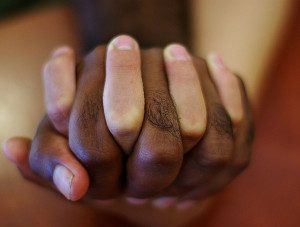Talking to Kids About Race – Where to Begin
By madeleine rogin
When we encourage children to ignore the ethnic and racial differences around them, we often hope that this will result in creating a “color-blind” child. There’s nothing wrong with wanting children to recognize the shared humanity in one another, but this “color-blind” approach is flawed for several key reasons. First, it ignores the fact that children notice difference all the time. Young children often sort their toys and other materials into color groups, and children of all ages are asked to engage in this kind of sorting and categorizing in school. The lack of open discussion around race can also inadvertently contribute to the formation of biases and stereotypes. On the one hand, children are told that race is a superficial difference that should be ignored. On the other hand, they observe real inequities across racial lines, such as more people of color living in impoverished neighborhoods in their communities. They are left to draw their own conclusions, which will most likely not be based on a historic or systemic understanding of racism. In order to promote equity and inclusivity, we would do better to give our children a basic understanding of race and racism from early on.
Developmental guide to talking about race for ages 3-8.
3-4 year olds
At this age, children are full of curiosity about the world. Read picture books that celebrate all the different shades we come in. Some of my favorites are: The Skin You Live In by Michael Tyler, All the Colors of the Earth by Sheila Hamanaka and Skin Again by Bell Hooks. Emphasize that the diversity of skin tones makes the world a richer, more beautiful, and interesting place! Go to a paint store and get all different colors of paint chips. Compare your skin tones to the paint chips and use these names as inspiration for poetry or artwork.Use the book Tan to Tamarind by Malathi Michelle Lyengar to explore poems about the color brown, a color often left out of children’s poetry and songs. After reading the poems, use brown spices such as cinnamon, cloves, coffee grounds, and nutmeg to make art. Help children come up with descriptive language around how these spices feel and smell. The result is a collection of beautiful associations with the color brown, and this activity can work to combat and prevent any biases that may be forming.
5-6 year olds
At this age, children begin to voice their questions about why we are the way we are. Read books that give a more scientific explanation of where skin colors come from, such as All the Colors We Are by Katie Kissinger. This is also the time to give children language they can use to be inclusive with one another, and to build their empathy around differences. For example, when a child expresses curiosity about a friend or classmate’s hair, take the opportunity to read books about different hair types in order to teach about why we have different hair and why it’s important to appreciate and respect this difference. Two good books for this are Hair Dance by Dinah Johnson and Hairs/Pelitos by Sandra Cisneros.
It is also important to talk explicitly about racism, so that children can recognize situations of bias and racism when they occur. Use puppets to act out scenarios of exclusion around skin color and engage children as problem solvers to come up with inclusive solutions. As they learn about the Civil Rights Movement, help children make sense of the larger themes around social justice by connecting these themes to something familiar and personal. Read children’s books that have “change-makers” in them. The Lorax by Dr. Seuss is a good one! Also, seek out stories of key figures of the Civil Rights Movement of all races, genders, and ages, in order to help children appreciate that diverse groups work together to bring about big changes, and to allow all children to find anti-racist role models. Learn about Claudette Colvin, the black teenager who refused to sit in the back of the bus, James Reeb, the white pastor and Civil Rights activist in Washington D.C., and Ruby Bridges, the young black girl in New Orleans who attended an all white school in 1960.
7-8 year olds
At this age, children should have a basic understanding of where skin color comes from, how to be inclusive with one another, and how to recognize bias or racism when they see it. If they don’t have this basic understanding, go back to the section on 3-4 year olds and start there! Think of it as how you might approach helping a child gain a basic understanding of math in order to be prepared for higher math classes. There’s no shame in “skilling up” in any important learning area, whether it be math or learning about race, racism, and empathy.
Help children find books to read that feature characters of all different races, and not just the books that tell stories around racism, though those are important. It is also important that children see characters of all races in “every day” books, experiencing relatable problems and situations. This will help expand their ability to empathize with all different kinds of people. This is especially important as children begin to pay attention to, and receive more, messages about people of color in TV shows, advertisements, and movies that are not always positive or affirming.
It is also important to monitor the media that children are watching, and to point out instances of stereotyping when they occur. Ask children to think critically about the characters in the movies, television shows, and music videos they watch, or the video games they play. Are there an equal number of characters of color and white characters? Who are the “good” characters and the “bad” ones? Who gets to be the main character? One of the best ways to prevent or combat biases is to become critical thinkers, rather than passive absorbers, of the often explicit, and at times, implicit, media messages about race.
Continue to create space for children to ask their growing questions about race and racism. And if you don’t know the answers or how to respond, it's okay to say, “I need to think about that and get back to you,’ and then do some reading to increase your own knowledge.

